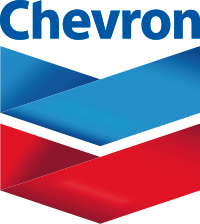Corporate donors still prefer the shadows
Business groups still prefer to make their political giving in private, a Sunlight examination of donations to super PACs recorded through Oct. 15 suggests.
Prior to 2010, corporations and unions couldn’t give directly to political action committees, though their employees and members were free to donate their own money to sponsored PACs. Individual donations to these PACs, however, were capped at $5,000 a year. After a series of court decisions known collectively as “Citizens United,” however, businesses were free to spend as much as they wanted from their corporate treasury on federal politics, so long as it went to super PACs that didn’t coordinate with the party or candidate.
Determining how much corporations are taking advantage of that isn’t easy: There’s no box to check on Federal Election Commission forms that signifies corporation, so Sunlight analyzed all donations of $10,000 or more to super PACs and classified them as coming from corporations, unions, trusts, political or nonprofit groups, Native American groups or otherwise.
Business giving amounted to about $26 million of the roughly $594 million raised by super PACs between Jan. 1, 2013 and Oct. 15, 2014. Unions far outspent corporations during the same time period, giving some $55 million. Political groups and nonprofits’ donations amounted to $27.5 million. Contributions from trusts amounted to just under $12 million, and Native American groups accounted for another $1 million.

Many of the biggest corporate checks came from groups closely affiliated with big individual donors. A million dollar check from HFNWA, LLC to the Senate Majority PAC appears to be linked to long-time donor Franklin Haney. But others seem more closely tied to corporate interests. The biggest public donation from a publicly traded company this cycle appears to be $1 million from oil giant Chevron to the Congressional Leadership Fund.
But giving to super PACs, which disclose their donors, is just one avenue open to organizations interested in influencing elections. Another result of Citizens United and subsequent court decisions was that nonprofits, corporations and unions can now spend their own money on political ads “expressly advocating” for or against federal candidates without reporting their own donors. To date these dark money groups have disclosed spending more than $124 million on independent expenditures in the current campaign cycle, including $31 million from the U.S. Chamber of Commerce.
Important caveat: Dark money groups only report a fraction of their election spending. Ads that do not clearly advocate for or against a candidate and run more than 60 days before the general election — sometimes called “sham issue ads” — are not reported at all.
The analysis included only itemized contributions to super PACs reported as coming from organizations and individuals; contributions from other PACs — including regular corporate or union PACs themselves subject to contribution caps — were not included. A raw file of all line items from non-individuals to both super PACs and hybrid super PACs is available for download here.

